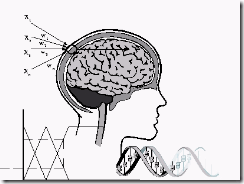| 硬计算、软计算与混合计算 |
| 硬计算与软计算这两个术语首先由美国加州大学的Zadeh教授于20世纪90年代提出。 硬计算的主要特征:(1)易于建立问题的规范数学模型;(2)建立的数学模型易于求解,且能达到较高的精确度;(3)解具有较好的稳定性。 软计算的主要特征:(1)难于建立问题的规范数学模型;(2)难于得到问题的较高精度的解;(3)算法具有较好的适应性,能够适应动态环境。 软计算中的核心方法主要包括模糊逻辑(Fuzzy Logic,FL)、神经网络(Neural Networks,NN)和遗传算法(Genetic Algorithms,GA)以及这几种方法之间的不同组合形式。 混合计算是传统的硬计算与新兴的软计算的组合,混合计算可以获取各自所长,克服各自局限性。 一个合适的面向问题求解的计算策略的选择取决于问题的属性。 Soft computing differs from conventional (hard) computing in that, unlike hard computing, it is tolerant of imprecision, uncertainty, partial truth, and approximation. In effect, the role model for soft computing is the human mind. The guiding principle of soft computing is: Exploit the tolerance for imprecision, uncertainty, partial truth, and approximation to achieve tractability, robustness and low solution cost.(http://www.soft-computing.de/def.html) 参考文献: 1. Zadeh, Lotfi A., Fuzzy Logic, Neural Networks, and Soft Computing, Communications of the ACM, March 1994, 37(3):77-84 2. D. K. Pratihar. Soft Computing, Narosa Publishing House, 2008(王攀 等译. 软计算,科学出版社, 2009) 3. Ovaska S. J., VanLandingham H. F., Kamiya A.. Fusion of soft computing and hard computing in industrial applications: an overview. IEEE Transactions on Systems, Man and Cybernetics. Part C, Applications and reviews, 2002,32(2):72-79 |
转自:http://www.sciencenet.cn/m/user_content.aspx?id=242591























 1726
1726

 被折叠的 条评论
为什么被折叠?
被折叠的 条评论
为什么被折叠?








